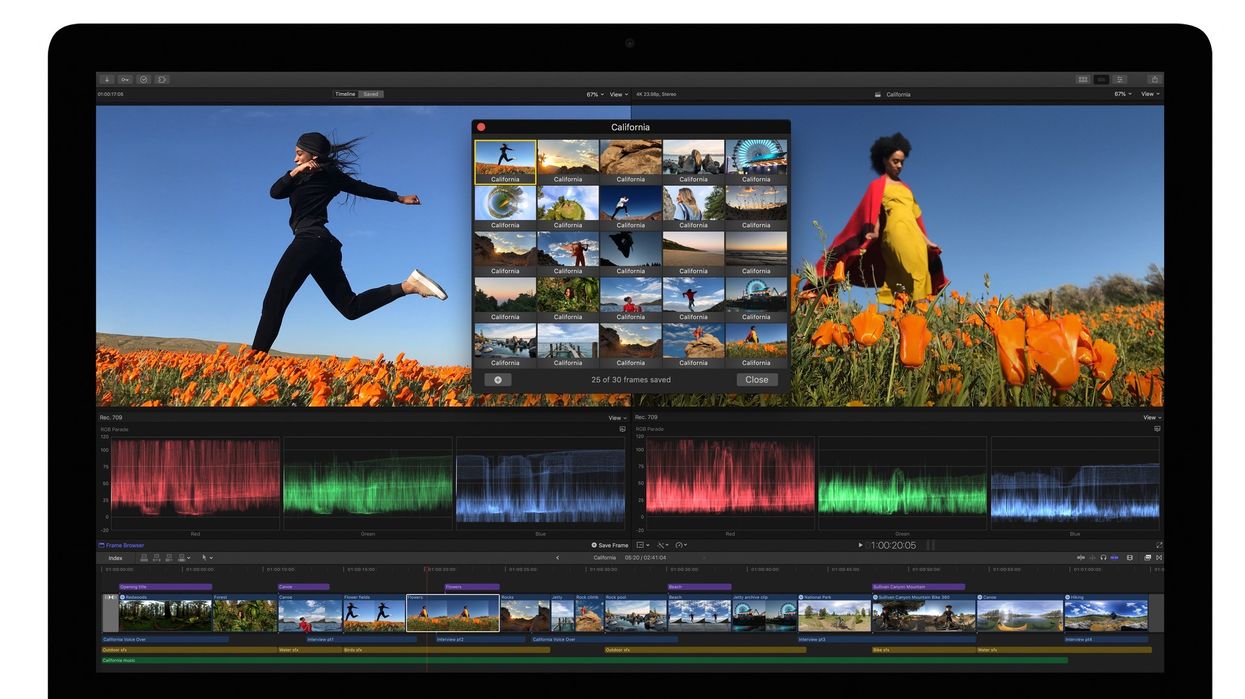Apple Unleashes Robust Functionality for Pros with Final Cut Upgrade
It's good to be a pro these days, thanks to robust upgrades in the pro video space from Apple.

Following hot on the heels of thepro-focused Apple hardware announcement a few weeks back, Apple how now released another upgrade to Final Cut X with even more professionally focused features.
This comes on the heels of the pro update to FCP-X in the spring that included the major release of ProRes Raw (not to mention last year's major release that focused on pros).
After a rough start, it's clear that Apple is very, very serious about professional users. Let's dig into the new functionality.
The most significant upgrade this time around is with extensions, going beyond simple plugins to offer tremendous integration between the host application (Final Cut X) and the partner application.
The best example of this is with Frame.io, the work-in-progress review tool. With Frame.io, a client can watch the edit and give notes in real time that are timecode locked, meaning as you navigate from note to note, it lines up with that point in the video.
With previous frame.io plugins, you could always bring these notes into your timeline (in many NLEs) and it creates markers in the timeline that you can navigate through to work on the notes; all in all, it's a tremendous time saver.
One of the features that filmmakers have hoped for out of Frame.io is the ability to keep their note markers in place as they make tweaks. For instance, maybe the first note says "delete this shot" and deleting that shot throws the rest of the markers out of sync. Many editors address notes backward, from the end of the timeline, to compensate for this.
With the new Frame.io extension in X, powerful functionality is enabled.
On top of being able to directly interface with and upload to Frame.io from the X interface, the notes can be brought in as compound clips that persist with the clip even as you make changes in the timeline. This is a massive upgrade to your workflow.
You can then sort through the clips in your library and work through notes (even selecting out who the notes are from), finding the right place for addressing the note no matter how much you change the time. This goes far beyond a simple "plugin" and requires heavy interaction between the team at the host and the partner to enable that kind of functionality.

In one of the most impressive implementations, Frame.io will now let you not only know who has watched your cut but also will let you watch along with its playhead as it plays. Thanks to this, you can get a real sense of when feedback is coming and who has actually watched what parts of a video, so you can know if you need to start working on executing a note right away or wait until other team members have reviewed it.
This feature has real potential to dramatically change how teams work with video.
On top of the new extensions, there are also a host of new features specifically designed to make life easier when it comes to finishing within X specifically.
For example, there is a new compare mode, allowing users to compare shots against each other, very useful in the color grading process as you try to create continuity throughout a project. There is a built-in native, GPU accelerated noise correction that is pretty powerful. In our tests, it is somewhat limited in its customization tools, but we have also found that a lot of users don't customize their noise settings that much and many will get good results from the default settings.
Apple has completely revised the compressor to be fully 64 bit native. This allows the compressor to use a larger volume of your system memory. 32-bit programs can only really access 4GB of memory (which wasn't a big deal back in the days of HD video).
However, as video resolutions tilt over to 4K and even 8K, the compressor needs to access the full install of system memory to really function at full capacity, and the recently revised compressor can do that. This should speed up video renders and compression for users working with higher resolution workflows and even might have some benefit for lower resolution projects as well.
On top of that, there is also a hardware upgrade: the new MacBook Pro, released only back in July, now has not only the Radeon 560X graphics card available but also an upgrade to the 15" MacBook Pro that includes Pro Vega 16 or 20 cards. This update is a mixed bag.
More graphics horsepower is a fantastic thing, but releasing that upgrade so soon after the significant 2018 refresh will leave a lot of users who just poured out $3,500 for a laptop in August feeling already like their laptops are out of date.
Of course, the 560X is still a great card, but many video professionals want all of the graphics horsepower they can get. This brings the versions up to Final Cut Pro 10.4.4, Motion 5.4.2, and Compressor 4.4.2. With upgrade prices of only $250 or $350, this is obviously an option a lot of video pros would've gone for.
Final Cut is available now for $299, and as always the $199 academic bundle for all the pro applications remains a very aggressive benefit for students and educators.
Tech Specs:
- Video Compare Mode
- SRT subtitles
- Built-in noise correction
- full 64-bit compressor
- Robust program extension architecture
- Launch extensions include Frame.io and Shutterstock

















